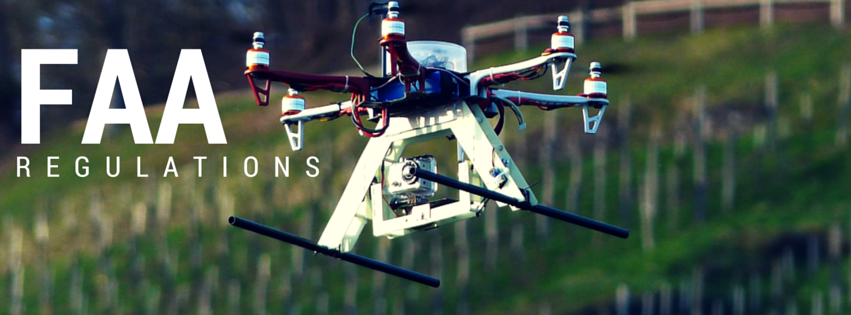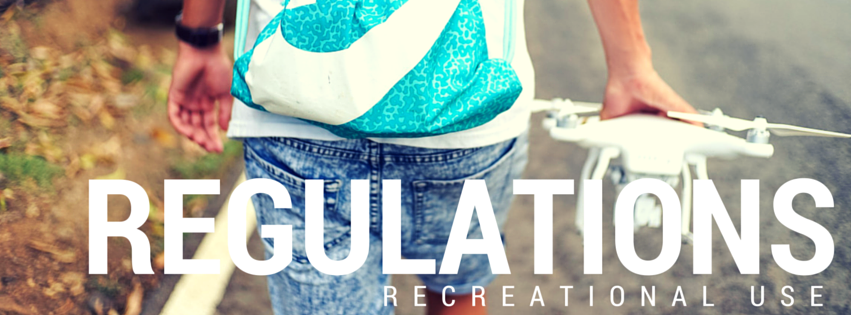FAA Regulations

A Summary of FAA Regulations:
The FAA realizes that Unmanned aircraft systems are inherently different from manned aircraft and have agreed that including drones into the regulations that govern our nation’s airspace is a challenging process. Regardless of the size difference, the responsibility to safely fly and operate drones is equal to manned aircrafts.
As part of the Know Before You Fly educational campaign, the FAA is partnering with several industry associations to promote safe and responsible use of unmanned aircraft.
 Regulations for Recreational Small Unmanned Aircraft Systems:
Regulations for Recreational Small Unmanned Aircraft Systems:
Recreational use of drones is defined by the FAA as the operation of an unmanned aircraft for personal interests and enjoyment. If you are not clear to the definitive use of your drone, check with the FAA as to what constitutes commercial or other non-hobby, non-recreational sUAS operations.
- All owners of small unmanned aircraft, or drones, weighing between 0.55 and 55 pounds must register their drone online before taking to the skies.
- Follow community-based safety guidelines, developed by organizations such as the Academy of Model Aeronautics.
- Fly no higher than 400 feet and remain below any surrounding obstacles when possible.
- Keep UAS in eyesight at all times, and you must see and avoid other aircraft and obstacles at all times. Use of an observer to assist is acceptable if needed.
- Stay clear of and do not interfere with manned aircraft operations.
- Do not intentionally fly over people or moving vehicles, and remain at least 25 feet away from individuals and vulnerable property.
- Contact the airport control tower before flying within five miles of an airport.
- Do not fly closer than two nautical miles from a heliport with a published instrument flight procedure.
- Do not fly in adverse weather conditions such as in high winds or reduced visibility.
- Do not fly under the influence of alcohol or drugs.
- Make sure the operating environment in which you are flying is safe and that the operator is competent and proficient to operate the UAS.
- Operating UAS near or over sensitive infrastructure or property is prohibited – such as power stations, water treatment facilities, correctional facilities, heavily traveled roadways, government facilities, etc.
- Follow all local laws and ordinances before flying over private property.
- Surveillance or photograph persons in areas where there is an expectation of privacy without the individual’s permission is prohibited.
- Recreational UAS users should be aware that in some rural and agricultural areas, other manned aircraft, may be operating close to ground level. These aircraft include pilots are conducting agricultural, firefighting, law enforcement, emergency medical, wildlife survey operations and a variety of others. These all legally and routinely work in low-level airspace. UAS should maintain situational awareness and remain a safe distance from these type of manned airplanes / helicopters.
For more safety information, please refer to the Know Before You Fly website.
 Regulations for Public Operations (Governmental)
Regulations for Public Operations (Governmental)
Public Aircraft Operations are limited by federal statute to certain government operations within U.S. airspace. Whether an operation qualifies as a public aircraft operation is determined on a flight-by-flight basis, under the terms of the statute. The considerations when making this determination are aircraft ownership, the operator, the purpose of the flight, and the persons on board the aircraft.
- For public aircraft operations, the FAA issues a Certificate of Waiver or Authorization (COA) that allows public agencies to operate a particular drone or aircraft, for a specified reason, in a certain airspace.
- The FAA states that they work with public organizations to develop conditions and provisions that allow for UAS flight without jeopardizing the safety of other people and aircrafts. Generally this includes making sure that drones are not being used in a populated area, that those operating the drone – or someone on the ground – can see it at all times, and that it is away from other aircrafts.
- Some of the common public uses for UAS under the umbrella of “Public Operations” include law enforcement, fire and police, border patrol, search and rescue, and military training.
You must submit an application for COA – a process that generally takes 60 days. You can learn more about it here.
